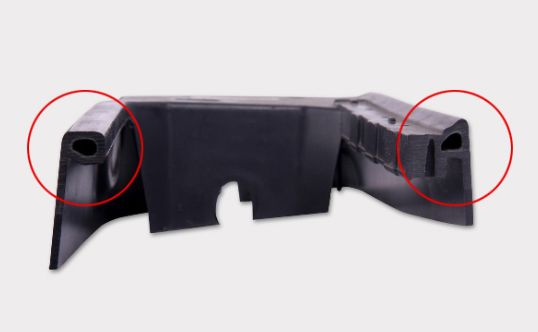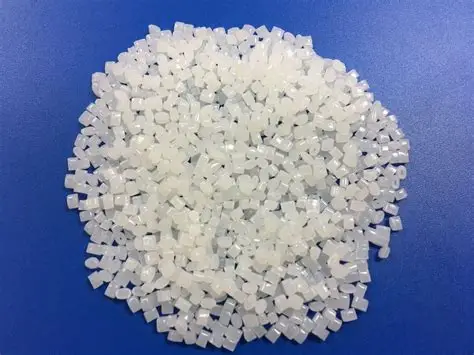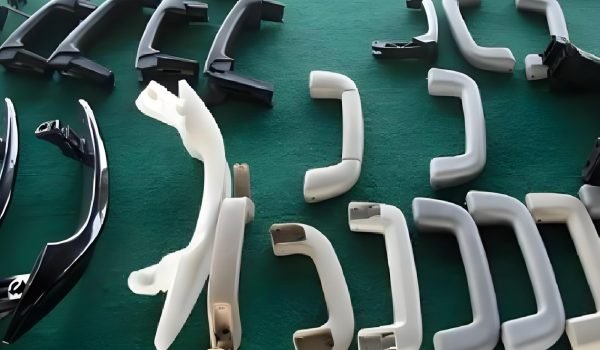If you need to manufacture lightweight, yet strong plastic components in very complex shapes, and you stumble across this essay, then you are in luck. We are exploring gas assisted injection molding – an innovative technique that will change your manufacturing process. We will talk about the gas assist injection molding principles and applications – what it is, the pros and cons of it, how it works, and what types of products benefit from it.
What Is Gas Assisted Injection Molding?
Gas assisted injection molding is a manufacturing process that combines traditional molding with nitrogen gas under pressure. Molten plastic is injected into a mold, but only to about 70-80% full. The gas pushes the plastic into the remaining space, creating a hollow section. The internal pressure created by the gas helps to ensure that the part cools evenly, while enabling very lightweight and strong as well as defect-free components.
This technique tackles common issues related to traditional molding – when a thicker part cools, it can cool unevenly, creating shrinkage and ultimately defects, such as sink marks or warping. Gas assist injection molding uses gas pressure to make up for the shrinkage from the inside out and maintains the shape and finishes of the part.
Advantages & Disadvantages of Gas Assisted Injection Molding
While there are many advantages of gas assisted injection molding, this process has a lot of disadvantages. Let’s look at the pros and cons and see if it could be right for your project.
Advantages
Gas assisted injection molding has quite a few advantages, such as making light-weight parts, lower material costs, smooth surface finish, faster cycle times, and more flexibility in design.
Lightweight Parts: By using gas to create hollow sections, you are using less plastic material. This makes the parts lighter in weight while maintaining strength. Use the example of a bone: strong on the outside and hollow on the inside. Lighter weight is much better for certain products, such as in automotive applications.
Reduced Material Costs: Less material means a lower cost. The process reduces waste and improves efficiency, saving you a lot of material cost, especially when producing a large quantity of parts. The decrease in your material costs also reduces your carbon footprint, which is an added bonus.
Smooth Surface Finish: The gas helps plastic to fill the mold evenly, creating a smooth and defect-free surface. It helps to eliminate common defects in surface finish, like sink marks and weld lines, and to ensure that the pressurized gas pushes the material hard against the walls of the mold to reproduce all of the detail.
Faster Cycle Times: Hollow sections cool faster than solid sections. You can produce parts faster, which means you are able to produce more parts with better efficiency. As the cooling time typically counts for a significant portion of the total cycle time, that’s a big advantage.
Design Flexibility: This process enables you to create complex geometries that would be impossible with traditional injection molding methods. Wall thicknesses can vary freely, and large unsupported sections made with this process are less susceptible to shrinkage and defects. It simply unlocks a new realm of product design freedom and possibility.
Disadvantages
Gas assisted injection molding has a few disadvantages, such as high initial cost, complex design of molds, potential for gas markings, and specialized expertise to operate.
High Initial Costs: The costs of the equipment, tooling, and process lead times are what eventually lead gas assist injection molding to be more expensive. The machines are specialized in a sense and require a more complex mold design. So this can be a deterrent to small companies or small production volumes.
Complex Mold Design: The mold design requires special channels for the gas, which can complicate the design aspect. You have to determine exactly where the gas is injected and how it is going to flow through the part as part of the plan. You need skilled designers and engineers to be successful.
Gas Markings: In certain cases, the gas can leave a visible mark on the surface of the part, compromising the appearance. The “gas marks” or “blushing” can be an issue for parts where the aesthetics matter, and in these instances, you may be able to mask them through careful part design.
Expertise Required: This technique takes specialized knowledge and expertise to execute correctly. You need to know the correct gas flow rate, pressure and timing of injection into the part in order to get the desired outcome. Without this expertise, it could result in production defects and wasted material.

Types of Gas Assisted Injection Molding Processes
There are two main types of gas assisted molding, and each has its own unique application. Let’s take a look at both.
1. Internal Gas Assisted Molding
Process: The gas is injected directly into the molten plastic, and once injected, it will form a bubble inside. This bubble pushes the molten plastic to the mold wall and will create hollow sections in the part. The gas core will hold the plastic in position while everything cools and solidifies. This process works well for the creation of structural parts with thick sections.
Benefits: This method is ideal for making lightweight parts with thin walls. The amount of shrinkage and warpage is less, and because the gas is applying pressure from the inside outwards, it reduces deformation as the part cools. You are left with a product that is strong, stiff, and with less material.
Applications: This method is well-suited to parts like automotive instrument panels, furniture components, and toys. It is also applied to parts like appliance handles and large panels, where a strong light structure is required.
2. External Gas Assisted Molding
Process: Gas is introduced through microchannels exiting the backside of the mold, and applies pressure to the plastic from the back side. This provides a good surface finish. The gas applies pressure to push the plastic against the mold surface, but does not contain the same hollow core as internal molding. This method just ensures the surface is perfect.
Benefits: This method is great for parts with complex surface patterns as well as large, complex curves. It can also work for thick sections without defects. The gas pressure helps reduce sink marks on the surface of the parts, which is beneficial when creating aesthetic components.
Applications: It is typically used for things like protective housings, steering wheels, and large plastic panels where a perfect surface is required. Think of a car dashboard—you wouldn’t want any sink marks on that.
How Does Gas Assist Injection Molding Work?
The gas assist injection molding process is a carefully timed sequence of steps. It’s a little more complicated than traditional molding, but it provides much better results. Let’s go through the four steps.
1. Plastic Resin Injection
You will first partially fill the mold with molten plastic, typically about 70%-80% of the total mold. The first shot of plastic is controlled to allow for space where the gas will fill inside the mold. This differentiates gas assisted molding from traditional injection molding, where the mold is completely filled with the plastic.
2. Primary Gas Penetration
In the next step, a set amount of high-pressure nitrogen gas is directly injected into the molten plastic. This gas establishes a bubble or core in the thickest section of the part. The gas then expands as an internal piston and pushes the molten plastic out towards the corners of the mold and detailed areas.
3. Secondary Gas Penetration
When the plastic is cooling off and shrinking, the gas is still flowing into the part. This constant pressure from the inside helps compensate for the material’s natural thermal contraction, which prevents common defects like sink marks and warpage. The gas acts as a holding agent to help keep the part and structural integrity intact while solidifying.
4. Cooling and Ejection
The gas is released once the plastic has fully cooled and hardened. The completed part is then ejected from the mold. This process not only creates a hollow, lightweight part, but it also results in a significant reduction of plastic in the part and could provide faster cycle times than traditional processes for the same type of part.
Plastic Materials Used for Gas Assist Molding
Gas assist injection molding can be performed with many types of plastic materials. Each has different properties and is best suited for one application and not so much for others.
Polypropylene (PP): Polypropylene is known for toughness, being resistant to chemical agents, and being resistant to heat. It is very common in food containers and many automotive parts. PP is one of the most used plastics.
Polycarbonate (PC): PC is extremely strong and impact-resistant, which makes it great for many applications, including safety gear and electronic enclosures. If you ever thought of a protective case for a phone, it is very likely made of PC.
Acrylonitrile Butadiene Styrene (ABS): Being lightweight, non-toxic and durable, ABS is an ideal plastic for many applications, such as toys, automotive components, and protective casings. A perfect example of ABS plastic would be LEGO bricks.
High-Density Polyethylene (HDPE): HDPE is strong and weather-resistant, which makes it a great material for outdoor products, such as bottle or pipes. It is very flexible, making working with it easy and useful.
High Impact Polystyrene (HIPS): HIPS has good impact strength and is easy to process. It is suitable for packages and consumer products like disposable drink cups and trays.
Nylon: Nylon is high-strength and wear-resistant, great for making gears, machine parts, and sports equipment. The desired use of nylon in parts with friction and stress makes it useful and versatile.

Applications of Gas Assisted Molded Plastic Parts
Gas assisted injection molding is used in numerous industries because of its versatility in creating strong, lightweight, complex parts.
Automotive
In the automotive field, gas assisted injection molding process can be used to produce lightweight instrument panels, door panels, or seat backs. Reducing the weight of these components is an important selling point to improve a vehicle’s fuel efficiency, which is a priority for many car manufacturers and consumers.
Consumer Products
You will find gas-assisted parts in a number of household products we all use, including furniture components, appliance parts, and toys. It is an ideal process for producing strong, hollow plastic parts like a sturdy chair or vacuum cleaner housing. You are able to create a strong part that is functional while leaving out the solid weight of plastic.
Aerospace
In the aerospace industry, every ounce matters. Within the boundaries of gas assisted molding, there are applications for air ducts, seat frames, and interior panels. This process delivers a significant weight reduction for the overall aircraft. Reducing weight leads to better fuel efficiency and a reduction in operational costs.
Electronics
This technique is an excellent solution for producing high-quality electronic device enclosures or housings. It ensures accurate part fit, a high-quality surface finish, and eliminates sink marks and other surface defects. It is well-suited for consumer electronics and structural components.
Conclusion
Learning the question – how does gas assist injection molding work – is like opening a wide world of smarter and cost-effective design. This approach prevents the cons by improving your designs while creating better, lighter, stronger parts, while eliminating waste. It also reduces many common mold defects, such as warpage and sink marks, resulting in more freedom in design.
At Fecision, we provide high-quality gas assisted injection molding services for precision plastic parts. Our focus is on utilizing this advanced technique to create lightweight, high-strength parts with complex designs that conform to the highest quality and performance requirements.
Our Capabilities:
- Precision Engineering: We utilize advanced equipment and professional engineering for part production to ensure that the parts are always manufactured accurately.
- Wide Range of Materials: Our gas-assisted molding process supports a wide range of high-performance engineering plastics—including ABS, PP, PC, and others—due to their compatibility with the technique’s requirements for strength, durability, and suitability for complex geometries.
- Custom Solutions: We support customers no matter if you require automotive parts, consumer products or an industrial component. Our capable services will be tailored for your requirements.
- Quality Assurance: Each component goes through a rigorous quality assurance process so that it meets high standards. The process of commitment means that the product you will end up with will be defect free and useable.
Are you ready to bring your ideas to life through innovative and precise gas assisted injection molding? Contact Fecision now to learn more about our services.




